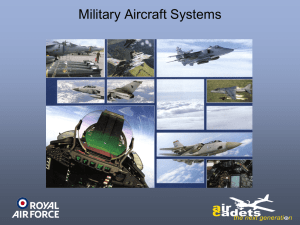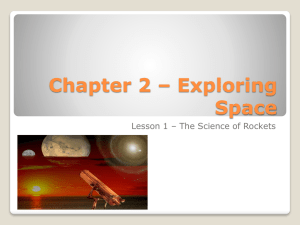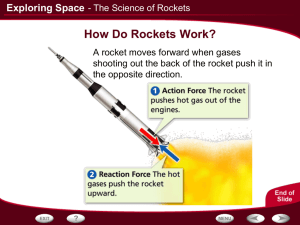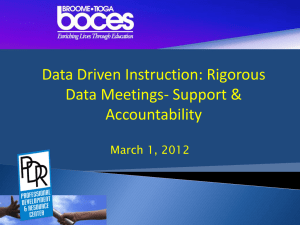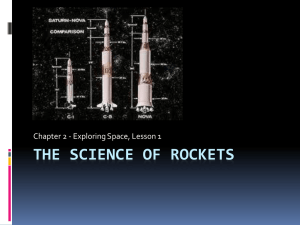slides
advertisement
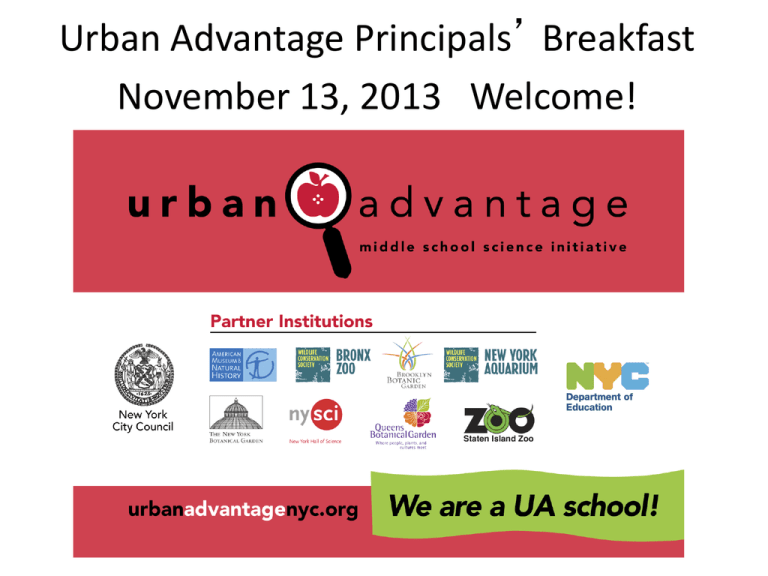
Urban Advantage Principals’ Breakfast November 13, 2013 Welcome! Today’s agenda: 1. Welcome 2. Successful UA Schools and Setting Goals 3. UA practices in the classroom: “look- 4. for’s” Reflections and next steps Today’s agenda: 1. Welcome • Josh Thomases • Deputy Chief Academic Officer for Instruction, NYC Department of Education Monique Darrisaw-Akil Executive Director, Office of School Programs and Partnerships, NYC DOE Today’s agenda: 1. Welcome 2. Successful UA Schools and Setting Goals – How School-Level Factors Influence Success – with UA Setting Goals Successful Schools: How School-Level Factors Influence Success with Urban Advantage Findings: • School culture and structure matter • Administrative support exists in different ways • Good use of UA vouchers & other materials • Other programs and partnerships • Support for Common Core Literacy Standards At the UA Admin Kickoff events in September… • …UA schools developed implementation plans for 2013-14 We looked at our UA school reports… to see “where we are now…” UA Planning Tool… Science Instruction Strategies and Activities Where we are now… ELEMENTS TIME We hoped UA planning would help you write parts of your Comprehensive Education Plan A few examples of goals schools chose… • Encourage all your science teachers (UA and non-UA) to complete long-term science investigations. • Integrate field trips into the curriculum to extend learning outside of the classroom. • Differentiate UA tools (IDD, DSET) for 6th (and 7th) grade students • And many more….! Think Pair Share… Find an elbow partner: • Each person shares a goal for implementing UA this year at their school (3 minutes) Find another elbow partner: • Discuss the same, with your new partner (3 minutes) Another UA goal might be… … to spend time in the classroom to see: • What parts of UA are your teachers implementing…? • How are UA teachers applying UA PD experiences in their classrooms? Today’s agenda: 1. UA in 2013-14… numbers 2. Some housekeeping—important info 3. Networking: share 1 element of your FY14 4. 5. UA implementation plan UA practices in the classroom: “look-for’s” Reflections and next steps Handout: Look-fors in a UA science classroom (Pink) Handout: Look-fors in a UA science classroom • Read handout (3 minutes) • Objective this morning: help you recognize UA practices in the classroom (look-fors #1-4) using a straw rocket investigation Carefully observe the 2 sets of rocket launches • Afterwards, we will give you a worksheet with questions about what you observed… blue and green rockets Handout: Investigating motion of 2 rockets (Yellow) This handout will ask you to: • Explain the “discrepant events” you observed • Familiarize you with the rocket system • Then begin designing an experiment to investigate 1 of the “discrepant events” Handout: Investigating motion of 2 rockets (Yellow) Handout: Investigating motion of 2 rockets (Yellow) 1. In the demonstrations, how can you explain the differences in distance the rockets traveled? Discrepant event #1 (same rocket, 2 piston heights): Discrepant event #2 (2 different rockets, same piston height): Handout: Investigating motion of 2 rockets 2. As I introduce the Straw Rocket System… Label the parts of the rocket system in box on your handout. Introduction to the ‘straw rocket’ system A FEW CLARIFICATIONS: • Before we ask you to answer questions 3-5 on worksheet ‘Investigating motion of 2 rockets…’ A FEW CLARIFICATIONS/DEFINITIONS: • Change in motion of an object is called “ACCELERATION” • Distance rocket travels indicates change in motion (acceleration) at time of launch A B If the distance traveled is larger, the change in motion was greater when launched (A). If the distance traveled is smaller, the change in motion was smaller when launched (B) A FEW CLARIFICATIONS/DEFINITIONS: Piston height (cm) indicates force A force is a push or pull upon an object • The piston compresses air at the base of the chamber, causing air pressure which exerts a force on the rocket resulting in a launch. • Higher piston height (cm) causes more air pressure and greater force on the rocket. Handout: Investigating motion of 2 rockets Now you know more about the rocket system. Answer the remaining questions on your worksheet (4 minutes): 3. Pick one discrepant event (#1 or #2) and identify in the diagram(s) the variables you would investigate to explain the different distances the rockets traveled 4. Identify the factors you would keep constant when investigating the event you chose in question #3 5. Write a question that would guide you when investigating the event you chose in question #3 Handout: Investigating motion of 2 rockets Whole group share: (2 minutes) 3. Pick one discrepant event (#1 or #2) and identify in the diagram(s) the variables you would investigate to explain the different distances the rockets traveled: 4. Identify the factors you would keep constant when investigating the event you chose in question #3: 5. Write a question that would guide you when investigating the event you chose in question #3: Handout: What Is Newton’s Second Law of Motion? (White) PURPOSE OF THE READING: To help you fine tune your question (#5) by learning more about force and motion READING: What Is Newton’s Second Law of Motion? Reading strategy: Highlight and annotate your handout TO DO: 1. Look for science concepts that most relate to your question (3 minutes) 2. Refine your question if you can: use vocabulary to make it more scientific. Example: if you haven’t already, try to use the terms… ‘applied force,’ ‘mass of the object,’ ‘acceleration…’ (2 minutes) 3. Share… READING: What Is Newton’s Second Law of Motion? UA uses background readings—prior to data collection—to help students: 1. Connect relevant science concepts to their question 2. Word their question using science terms/vocabulary 3. Construct predictions (expected outcomes) based on the science Fine-tuning the question using UA’s question format: How will (independent variable) affect (dependent variable)?) EXAMPLE: • How does changing the force applied to an object (a rocket) affect its change in motion (acceleration)? UA’s hypothesis format: If… (summarize independent variable being changed) Then… (predict effect on dependent variable) Because… (describe scientific concepts that relate to this prediction) UA’s hypothesis format: Example of a UA hypothesis: If we increase the force on the rocket, then there will be a greater change in motion (or acceleration) because…an object’s change in motion depends on the size of the applied force (Newton’s 2nd Law). If this were a UA classroom… • We would help students construct their own testable questions… • And help students design/conduct their own investigations… Because of limited time… • We will give you a question to investigate, and an investigation design to follow… Choose one of these 2 questions… A. How does changing the force applied to an object (a rocket) affect its change in motion (acceleration)? (The mass of the object is kept constant.) B. How does changing the mass of an object (a rocket) affect its change in motion (acceleration)? (The force applied to the object is kept constant.) Handout: Investigation Design A (blue) Handout: Investigation Design B (blue) TABLE GROUPS CHOOSE INVESTIGATION A or B LOCATE DATA TABLE A or B (YELLOW) Also: We have 2 system launcher designs Large Mini Data Collection (10 minutes) 1. Table groups stay together with your UA partner 2. Record data on sheet: limit data collection to non-grayed cells 3. Assign roles: recorder, launcher, spotter (watches where rocket lands)… 4. If your launcher is a “mini” you may collect data in this room (front) Data analysis at tables • Post data on chart paper • Look at your data: What do you notice about your data? • As a group, chart a list of everything you notice about your data. • This can be a list of “statements.” (Statements of Relationship) • List as many statements as you can. • This list is the beginning of your Data Analysis Data Analysis – Sample Statements • The ball launched by a spring compressed 5 cm pushed a cup a distance of cm. This is an example of a simple statement. • The ball launched by a spring compressed 1 cm pushed a cup the shortest distance. • The ball launched by a spring compressed 5 cm pushed a cup a farther distance than the ball released by a spring compressed 3 cm. • The more a spring is compressed in a pinball launcher, the further a ball that it launches pushes a cup placed in the ball’s path. This is an example of a complex statement. Reflections on UA Practices today… THANK YOU FOR COMING The slides below are optional update slides on UA—we probably won’t show them Important Stuff for 2014 • UA Vouchers and Journals update – All class vouchers delivered to teachers (USPS) – All student vouchers delivered to teachers (UPS) – All teacher and PC vouchers delivered (USPS) – All journals delivered to teachers (UPS) Voucher Questions: Monique mgarcia@amnh.org Important Stuff for 2012-2013 • Events – Expo Saturday, June 7, 2014 • AMNH • Saturday


